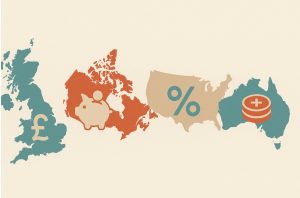Table of Contents
ToggleHow many people do you know who have money in the bank perhaps from years of careful saving and assumed that interest earned was theirs to keep? For decades, savings tax has been a quiet issue, affecting mainly wealthier individuals. But in 2025, the picture looks dramatically different.
New analysis from AJ Bell shows that in the current tax year, 2.64 million people will pay tax on their savings interest. This represents an extraordinary fourfold jump from the 647,000 people affected in 2021–22. The average tax bill for those caught in the net is now £2,300, a figure large enough to make a dent in many households’ budgets.
HMRC’s total take from savings tax has ballooned to over £6 billion, up sharply from just £1.4 billion in 2020–21. What was once a niche tax category has now become a mainstream concern, and the biggest shock is that it is increasingly hitting everyday savers rather than just high-net-worth individuals.
Among basic-rate taxpayers, one in 25 is now paying tax on interest income, compared with fewer than one in 100 only four years ago. For higher-rate taxpayers, the figure is one in eight, and for additional-rate taxpayers, almost half are now affected. This is a seismic shift in who is impacted and it is happening rapidly.
How Are Frozen Tax Thresholds and Rising Interest Rates Fueling the Surge?

The personal savings allowance (PSA) is the amount of interest you can earn before paying tax. It has been frozen since its introduction in 2016 at:
- £1,000 for basic-rate taxpayers
- £500 for higher-rate taxpayers
- £0 for additional-rate taxpayers
The freeze on PSA levels might not have been an issue when savings rates were near zero. However, the economic climate has changed. With the Bank of England raising interest rates to combat inflation, banks and building societies have increased what they pay on deposits.
Average one-year fixed accounts now offer around 4% interest, and easy-access accounts pay roughly 2.68%. Some of the most competitive accounts are paying over 5%.
This means many savers even those with relatively modest deposits are exceeding their PSA. A basic-rate taxpayer with £30,000 in a fixed account paying 5% would earn £1,500 in interest.
The first £1,000 is tax-free, but the remaining £500 would be taxed at 20%, resulting in a £100 tax bill. For higher-rate taxpayers, the allowance is even smaller, so the threshold is breached far more quickly.
Rachel Reeves’ decision in the 2025 Budget to keep PSA levels unchanged effectively amplifies the tax take. It acts as a form of stealth taxation the government collects more without raising official tax rates because inflation and rising rates push more savers over the same fixed thresholds.
Who Is Being Hit the Hardest by the Current Savings Tax Rules?
The burden of savings tax is no longer concentrated among the wealthy. Increasingly, middle-income households are being drawn in. AJ Bell’s figures, obtained via a Freedom of Information request, highlight the widening scope:
| Taxpayer Type | % Paying Savings Tax (2024–25) | Forecast Numbers (2025–26) |
| Basic-rate | 1 in 25 (4%) | 1.15 million |
| Higher-rate | 1 in 8 (12.5%) | 897,000 |
| Additional-rate | 45% | 548,000 |
Retirees are particularly exposed, especially those who have downsized homes or sold investments and kept the proceeds in savings accounts. Small business owners, who may hold large cash reserves for security, also risk significant tax bills.
Laura Suter of AJ Bell summed up the shift:
“What was once a tax affecting wealthier savers is now catching out everyday basic-rate taxpayers. Many won’t realise they’ve breached their allowance until HMRC comes knocking.”
What Is Rachel Reeves’ Approach to Savings Tax in the 2025 Budget?

In her first budget as Chancellor, Rachel Reeves has taken a measured but firm approach. While income tax rates themselves have not been raised, she has opted to keep PSA levels frozen despite widespread calls for an increase. This maintains the government’s ability to capture more tax revenue as interest rates remain high.
She has also introduced a “high saver” surcharge a new 2% levy on interest income above £10,000 a year. This targets the largest deposit holders, who are earning substantial sums in interest.
ISAs, which allow tax-free savings of up to £20,000 a year, remain untouched for now. However, Reeves has commissioned a review into their structure and limits, raising the possibility of changes in future budgets.
She has also strengthened HMRC’s enforcement powers by mandating more thorough automatic reporting of interest income by banks and building societies.
What Does This Mean for the Average UK Saver?
For the average saver, these measures mean it is easier than ever to be caught by savings tax. Many only discover they have exceeded the PSA when they receive a letter from HMRC, an adjustment to their PAYE code, or a P800 calculation.
Yet HMRC’s data-matching systems are not flawless errors occur in around 20% of cases, which can result in unexpected bills years later.
Illustrative Examples for 2025:
| Savings Balance | Interest Rate | Annual Interest | Taxpayer Band | Tax Due (Excl. Surcharge) |
| £20,000 | 5% | £1,000 | Basic | £0 (within PSA) |
| £50,000 | 5% | £2,500 | Basic | £300 |
| £50,000 | 5% | £2,500 | Higher | £800 |
| £250,000 | 4% | £10,000 | Higher | £3,800 + 2% surcharge |
The reality is that even fairly modest sums can trigger tax liabilities, particularly for higher earners.
How Can Savers Legally Reduce Their Tax Bill?
There are lawful and effective ways to reduce exposure to savings tax. One of the most straightforward is to make full use of ISA allowances. With cash ISAs now offering competitive rates, moving savings into these tax shelters is increasingly attractive.
Couples can also benefit by splitting savings between them, effectively doubling the amount of interest that can be earned tax-free under the PSA. Fixed-term accounts can be structured so that interest is paid in different tax years, helping to avoid breaching the allowance in any single year.
Diversifying beyond cash into tax-efficient investments such as stocks and shares ISAs or pensions can also shield returns from income tax entirely.
How Does the UK Compare to Other Countries on Savings Tax?

When set against other developed economies, the UK’s approach offers more protection for lower earners than some countries but far less for higher earners.
Canada’s Tax-Free Savings Account (TFSA) model, for example, provides a more generous universal shelter, whereas the United States taxes savings interest in full at standard rates, with no allowance.
| Country | Tax-Free Allowance Equivalent | Interest Tax Rate |
| UK | £1,000 (basic-rate) | 20–45% + surcharge |
| Canada | TFSA limit CAD $7,000/year | Marginal income tax outside TFSA |
| Australia | None | Marginal income tax |
| USA | None | Marginal income tax |
What’s the Long-Term Outlook for UK Savings Tax Under Labour?
Forecasts from AJ Bell suggest the upward trend will continue. By 2025–26, over 1.15 million basic-rate taxpayers are expected to be paying savings tax, along with nearly 900,000 higher-rate and more than half a million additional-rate taxpayers.
This is driven not only by frozen PSA levels but also by fiscal drag where frozen income tax thresholds push more people into higher tax brackets and by sustained, above-inflation interest rates. Unless the PSA is increased or interest rates drop significantly, the number of people affected will likely keep rising.
Conclusion – What Should Savers Do Now?
Rachel Reeves’ approach to savings tax reflects a political choice to raise revenue without altering headline income tax rates. The policy keeps allowances frozen, adds targeted charges for the biggest savers, and enhances HMRC’s ability to enforce compliance.
For savers, the key takeaway is clear:
- Monitor your total interest income across all accounts
- Make strategic use of ISAs and other tax shelters
- Consider the timing and structure of fixed-term products
- Stay alert to future budgets, especially regarding ISA rules
Failing to adapt could mean an unexpected letter from HMRC and an unwelcome tax bill.
FAQs – Savings Tax and Rachel Reeves’ Plans
What is the personal savings allowance in the UK?
It’s £1,000 for basic-rate taxpayers, £500 for higher-rate taxpayers, and zero for additional-rate taxpayers.
Why are more people paying savings tax now?
Frozen PSA levels combined with higher interest rates have pushed more savers over the allowance.
What is the “high saver” surcharge?
A new 2% levy on interest earnings above £10,000 per year, introduced in the 2025 Budget.
Will ISAs remain tax-free?
For now, yes, but the Chancellor is reviewing the scheme for possible changes.
How does HMRC know if I owe savings tax?
Through bank data reporting and PAYE code adjustments, though around 20% of cases have errors.
How can I avoid paying savings tax?
Use ISAs, split savings between spouses, and plan deposit structures to stay within the PSA.
How does the UK compare internationally?
The UK is generous to lower earners but offers far less tax shelter to higher earners than Canada’s TFSA system.
READ NEXT:




